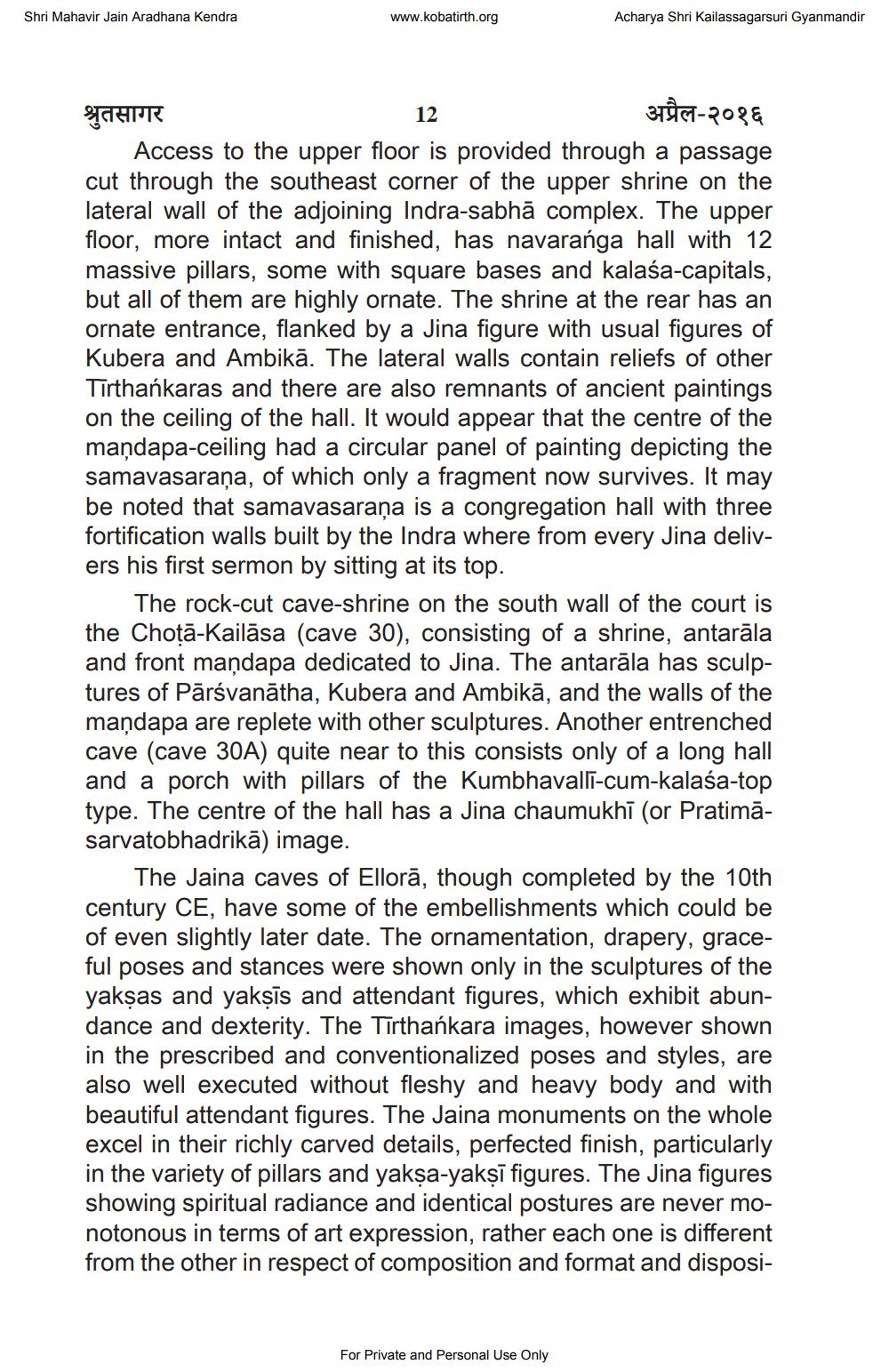________________
Shri Mahavir Jain Aradhana Kendra
www.kobatirth.org
Acharya Shri Kailassagarsuri Gyanmandir
12
श्रुतसागर
अप्रैल-२०१६ Access to the upper floor is provided through a passage cut through the southeast corner of the upper shrine on the lateral wall of the adjoining Indra-sabhā complex. The upper floor, more intact and finished, has navaranga hall with 12 massive pillars, some with square bases and kalasa-capitals, but all of them are highly ornate. The shrine at the rear has an ornate entrance, flanked by a Jina figure with usual figures of Kubera and Ambikā. The lateral walls contain reliefs of other Tirthańkaras and there are also remnants of ancient paintings on the ceiling of the hall. It would appear that the centre of the maņdapa-ceiling had a circular panel of painting depicting the samavasaraņa, of which only a fragment now survives. It may be noted that samavasaraņa is a congregation hall with three fortification walls built by the Indra where from every Jina delivers his first sermon by sitting at its top.
The rock-cut cave-shrine on the south wall of the court is the Chotā-Kailāsa (cave 30), consisting of a shrine, antarāla and front mandapa dedicated to Jina. The antarāla has sculptures of Pārsvanātha, Kubera and Ambikā, and the walls of the maņdapa are replete with other sculptures. Another entrenched cave (cave 30A) quite near to this consists only of a long hall and a porch with pillars of the Kumbhavallī-cum-kalasa-top type. The centre of the hall has a Jina chaumukhi (or Pratimāsarvatobhadrikā) image.
The Jaina caves of Ellorā, though completed by the 10th century CE, have some of the embellishments which could be
f even slightly later date. The ornamentation, drapery, graceful poses and stances were shown only in the sculptures of the yakşas and yakşīs and attendant figures, which exhibit abundance and dexterity. The Tirthańkara images, however shown in the prescribed and conventionalized poses and styles, are also well executed without fleshy and heavy body and with beautiful attendant figures. The Jaina monuments on the whole excel in their richly carved details, perfected finish, particularly in the variety of pillars and yakşa-yakşi figures. The Jina figures showing spiritual radiance and identical postures are never monotonous in terms of art expression, rather each one is different from the other in respect of composition and format and disposi
For Private and Personal Use Only




